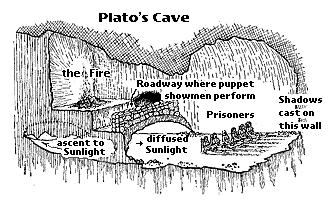Ideas are getting more and more abstract. These mentions of place are perhaps symbolic of the memories she had of them, or of the relationships she once had there.
She misses them but it she is still okay and everything is fine.
Elizabeth BishopOne Art by Elizabeth Bishop
Elizabeth Bishop’s One Art is a poem whose apparent detached simplicity is undermined by its rigid villanelle structure and mounting emotional tension. Perhaps her most well-known poem, it centres around the theme of loss and the way in which the speaker – and, by extension, the reader – deals with it. Here, Bishop converts losing into an art form and explores how, by potentially mastering this skill, we may distance ourselves from the pain of loss. At eight months old, Elizabeth Bishop lost her father, her mother then succumbed to mental illness and she later lost her lover to suicide. Therefore, we may see this poem as in part autobiographical. In it, the poet presents a list of things we may lose in life, increasing in importance, until the final culmination in the loss of a loved one.
One Art Analysis
The title should not be overlooked. With these two small words, Elizabeth Bishop encompasses the poem’s entire purpose: to remove the pain of loss by first levelling out everything that we lose; from door keys to houses to people (One), and second by mastering the fact of losing through practise (Art).
The art of losing isn’t hard to master;
so many things seem filled with the intent
to be lost that their loss is no disaster.
In the first stanza, Bishop sets out her intentions. She seems to affirm that loss is part of the human condition: we lose both significant and insignificant things constantly and should thus accept this as a natural part of life, and even master this practice so as to remove any sensation of disaster we may take from it. These two points will be repeated throughout the poem so as to emphasise them.
Lose something every day.
In the second stanza, she invites the reader in by naming two extremely common things to lose: keys and time. The enjambment between the first and second lines causes us to pause and contemplate how ridiculous is this ‘fluster’ that occurs when we lose our keys. She eases us slowly into her idea: the universality of these two occurrences allows us to relate and thus agree that indeed, this is not too hard to master and is certainly not a disaster.
Then practice losing farther, losing faster:
places, and names, and where it was you meant
to travel.
The emotional tension begins to subtly build in the third stanza as Bishop incites us to further our practise, broadening the scope of our loss. Here, the things we lose are more related to thought and memory: people, places and plans that, with time, naturally escape our head and no longer form part of our lives. This is harder for the reader to accept and the familiar affirmation that this will not bring disaster becomes less comforting. House keys and an hour here and there seem commonplace and natural and to consciously lose these things to aid our mastering of losing does not seem too difficult. Places, names and plans require a larger effort and a degree of emotional distancing that the second stanza did not call for.
There is a subtle change from the third to the fourth stanza, a perfect split in keeping with the poem’s rigid structure. Almost imperceptibly, the speaker switches from addressing the reader to drawing on her own experience. It is here that Bishop begins to undermine her meticulous structural details and carefully impassive tone. “I lost my mother’s watch”, she states, an admission that seems to come from nowhere. However, the casual tone is disappearing; the inexplicable mention of this personal aspect of the speaker’s life has upped the emotional stakes. As the stanza continues, it becomes clear that this is a further attempt to demonstrate the universality of loss. The picture becomes bigger and the distance larger. The exclamation: “And look!” betrays yet more emotion, despite it’s apparent offhand tone. Now Bishop tells us to look at our losses on a bigger scale: the houses we lived in – not so disastrous except for the use of the word “loved” here. Indeed, these were just places we lived in, but we nonetheless also loved in them.
The first person speaker continues in the fifth stanza as the poet attempts to further distance herself from loss. She is stepping further and further back and the picture she is painting reaches a higher geographical level: to cities and continents. Nevertheless, this is undermined by a wistful tone: the cities she lost were “lovely ones” and, although she maintains that their loss was not a disaster, she does admit that she misses them. Faced with this unusual outlook, the reader is forced to ask at this point: if the loss of a continent is no disaster, what would thus constitute one?
Bishop is also a traveller and called a lot of places home
 It's a clever reworking of
It's a clever reworking of 


